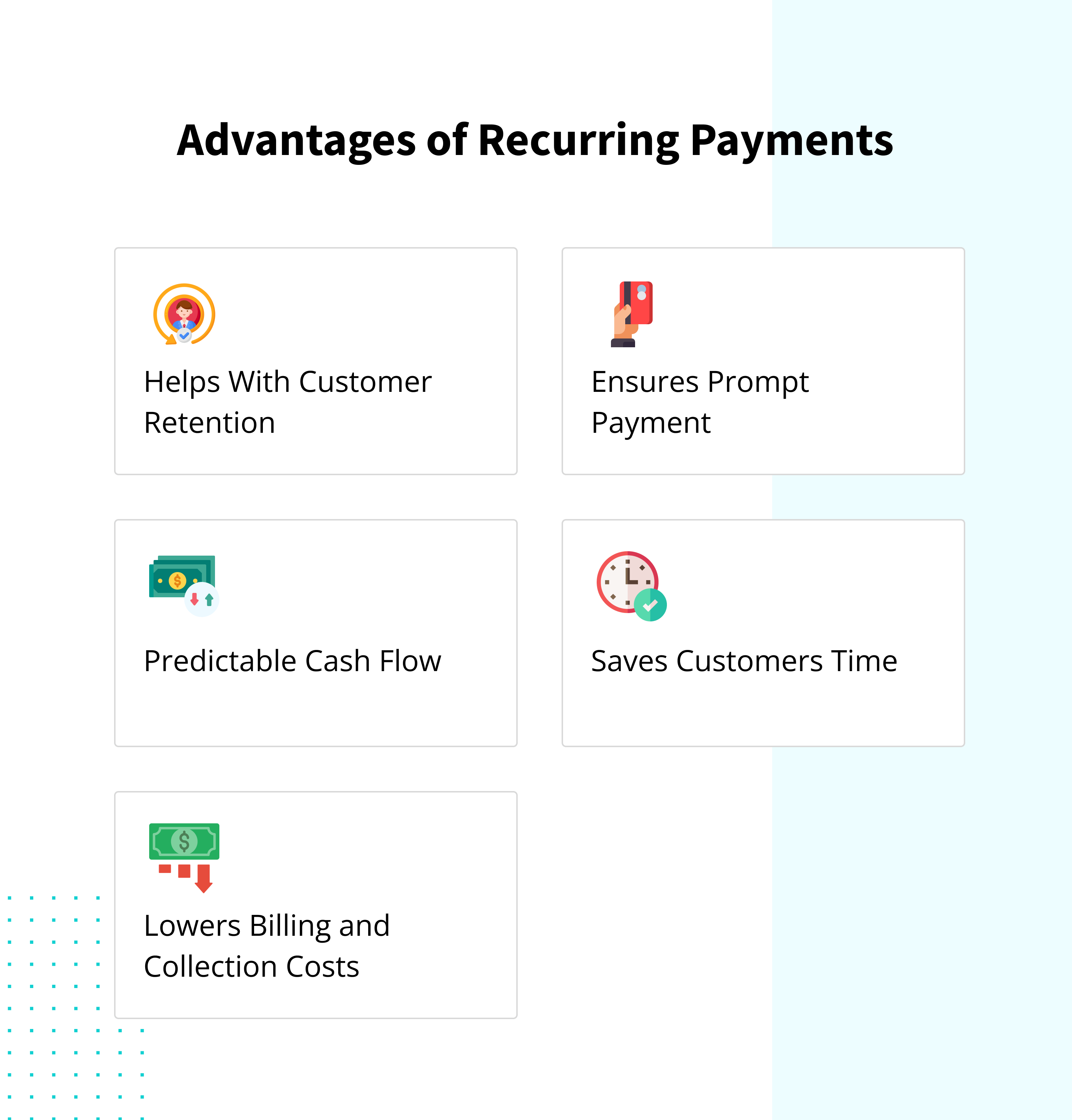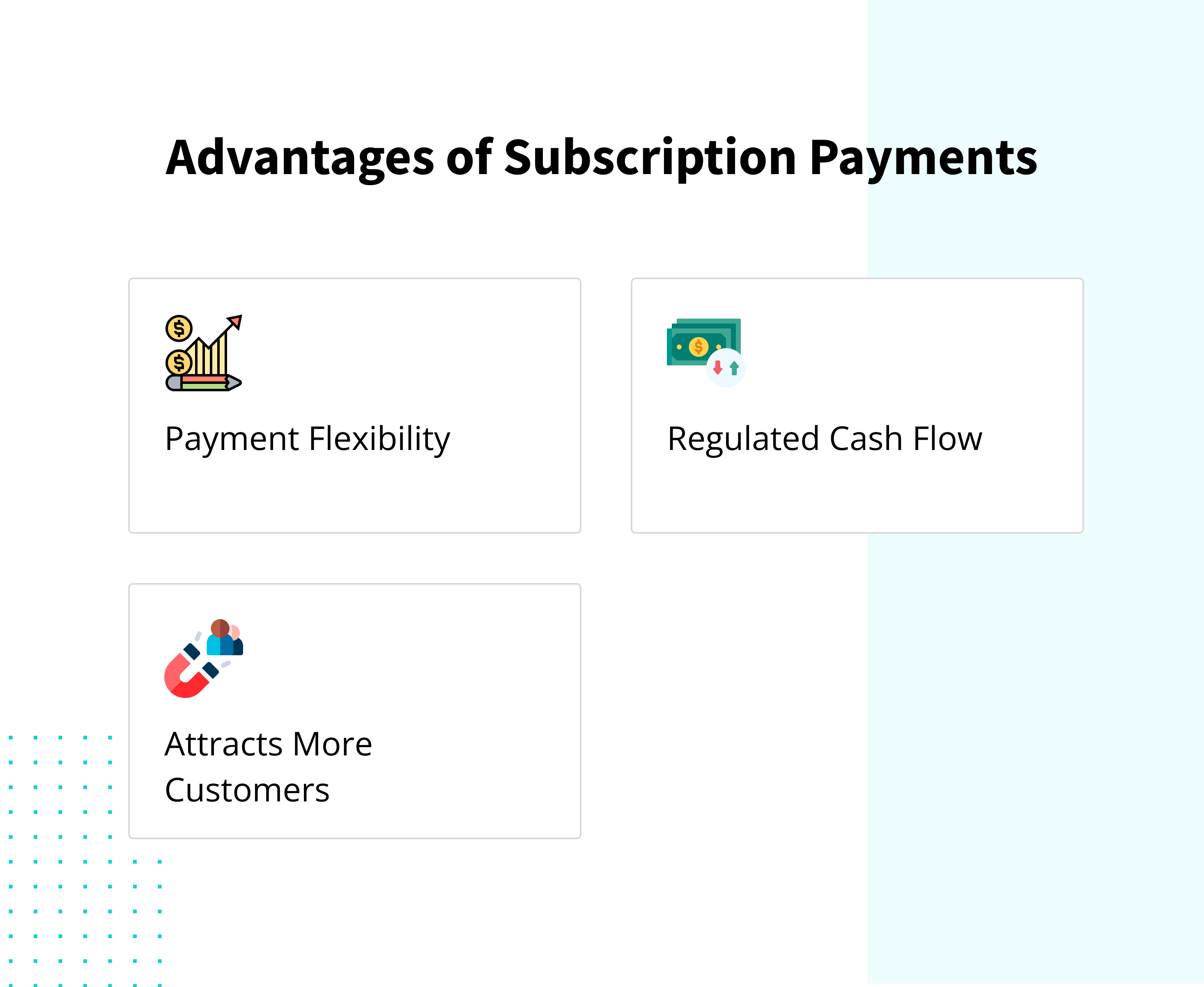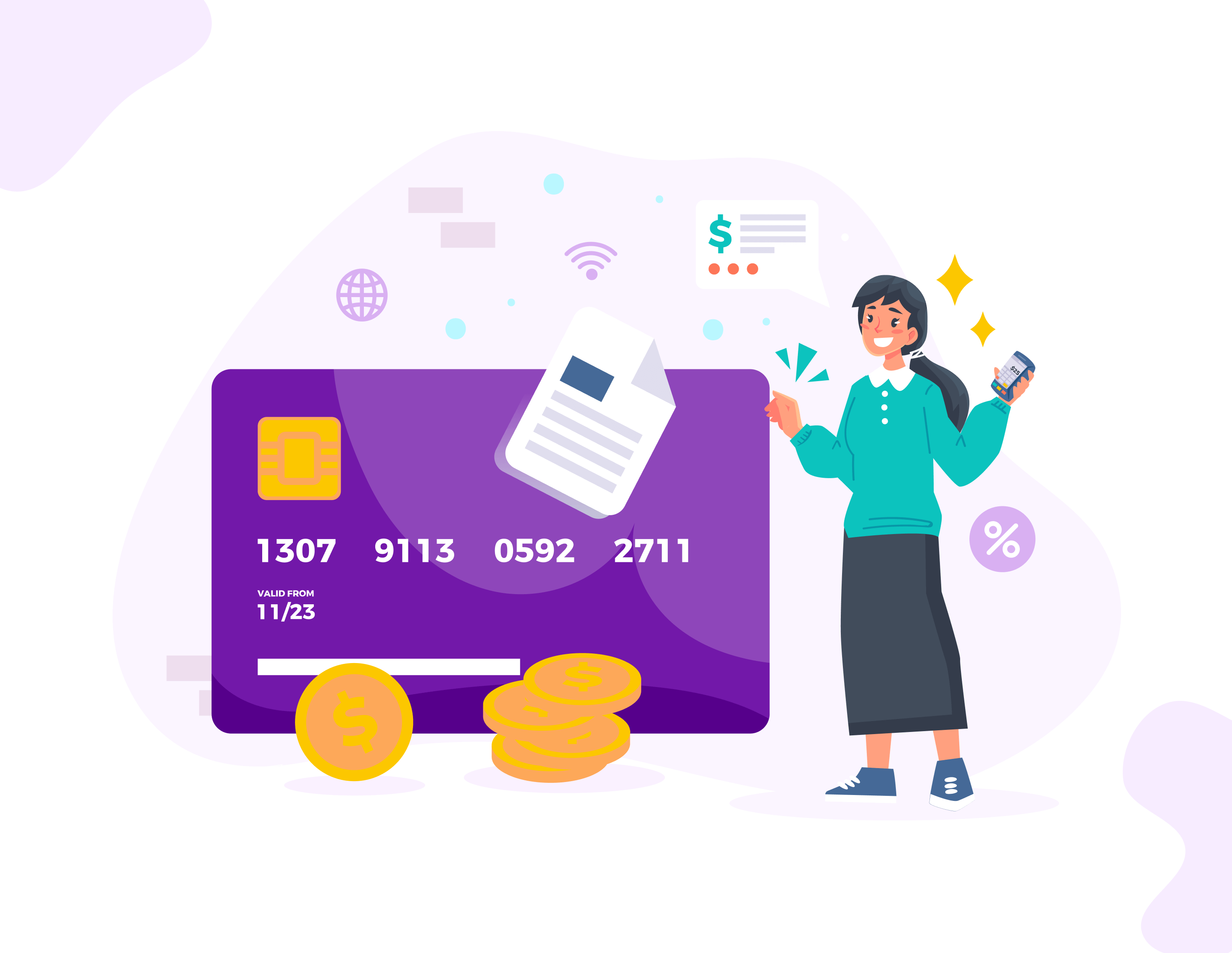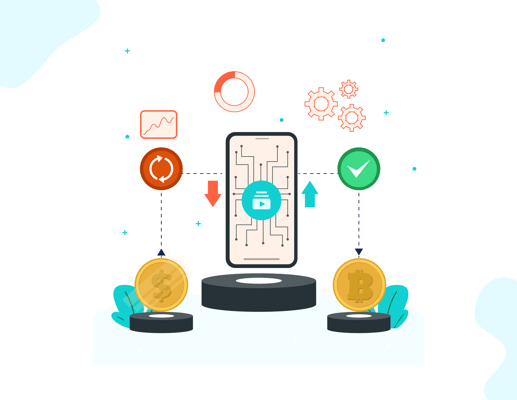Both recurring and subscription pricing models are popular for most businesses today. But what are these models, and how can they benefit your business and customers? Without delay, let us dive in.
What Are Recurring Payments?
Recurring payments (automatic or recurring billing) are a business model when customers allow the service or product provider to repeatedly charge for goods or services on fixed periods (monthly, weekly, daily, or annually).
Such recurring automated payments are a huge time saver for the business and its customers. The customer will keep receiving the product or service until they cancel the subscription or the recurring payment plan expires, without having to place an order or request the service each time.
Examples of Recurring Payments
Most service-based big brands use recurring payment models such as Netflix, Spotify, DropBox, digital magazines, Salesforce, and other software and digital services. Even gyms, libraries, or club memberships use the recurring payment system.
How Do Recurring Payments Work?
Recurring payments are automatically debited from customers' bank accounts on a predefined schedule. Several modes of payment can be allowed, such as debit cards, credit cards, UPI, internet bank transfers, etc. Businesses must have a merchant account with a payment service provider to accept these payments. The amount deducted from the customer's bank account first gets deposited in the merchant account and then transferred to the business's bank account.
Note: A merchant account is an account you create with the payment gateway provider that helps the transaction occur.
The payment service provider manages the payment processing entirely. It collects recurring payments on behalf of merchants, processes them securely, and then deposits the amount safely in the merchant's account. Different payment processors have slightly different flows, but more or less, the basic framework remains the same.
What Are the Types of Recurring Payments?
There are two categories of recurring payments:
Regular or Fixed Recurring Payments
Here the customers are charged the same amount each time (weekly, monthly, or yearly), For instance, streaming services, memberships, etc.
Irregular or Variable Payments
Here the payment the customer needs to make every week, month, or year differs according to the customer's usage of the product or service—for instance, electricity bills, grocery bills, or other utility bills.
What are the Advantages of Recurring Payments?

Why are so many business models around the globe based on recurring payments? Why do most consumers prefer recurring payments as compared to other payment models? There are several benefits of recurring payments, as discussed below:
1) Helps With Customer Retention
Recurring payment builds trust between the customer and business, further promoting customer loyalty. Customers enjoy the convenience of a good or service being delivered automatically at a fixed schedule without remembering to make a payment every time. It reduces the barrier to making a purchase every time due to the hectic schedule of most people.
2) Ensures Prompt Payment
Late payments can negatively affect a business's revenue and create a negative relationship between the customer and the business. With recurring payments, once the system is set up, the payment collection is automatically repeated on set schedules. This ensures prompt payments, and companies need not waste their valuable time reminding customers about their bills.
3) Predictable Cash Flow
Recurring billing helps create a reliable, consistent, and predictable cash flow for the business. Businesses no longer need to worry that a customer might fail to make the payment on time. The payment for a product or service delivered in a particular month will come in during that month only, so the revenue generated for a specific time frame can be predicted.
4) Saves Customers Time
In a recurring billing system, customers sign up and give their payment information only once, and then they can forget about it. Money is debited automatically every time from their account, saving them the time and effort to repeatedly place an order or request a service.
5) Lowers Billing and Collection Costs
Automated recurring payments help reduce expenses related to payment processing and manual invoicing. Since automatic billing is electronic, you need not pay any maintenance fee. The sales cycle gets shorter. You only need to set the original payment plan once, and then the software handles payment processing for you. This significantly brings down your billing and collection costs.
What Are Subscription Payments?
Subscription payments are also similar to recurring payments. Like recurring payments, the money gets auto-debited from the customer's bank account to the merchant account in fixed periods (monthly, weekly, or annually). Subscription businesses benefit from the flexibility to create different plans and pricing structures to meet market demands. They can customize the length of the plan and billing intervals according to the customer's needs.
What Are the Advantages of a Subscription Payment System?

Some of the benefits of subscription payments are:
1) Payment Flexibility
Most subscribers prefer the annual plan but want to spread the payments out by paying monthly or quarterly. A subscription payment system allows businesses to provide these options, enhancing payment flexibility and customer experience.
2) Regulated Cash Flow
With a subscription-based model, customers make payments to businesses regularly. Since the recurring payments are decided at the time of the initial sale, the monthly revenue is predictable and fixed. Billing automation ensures fewer gaps between billing cycles which plug all revenue leaks. The total revenue generation from subscription models is also higher than one-time purchases.
3) Attracts More Customers
Would customers prefer paying $25 per month or $500 at a single go? Higher prices are a purchase barrier for most customers. But in a subscription-based pricing model, they can spread out a large chunk of payment over small instalments and still enjoy instant access to the entire product or service. This benefit helps businesses attract more customers.
Look at : https://inai.io/subscription-management to understand how you can manage and optimize your subscriptions with inai
Recurring Payments V/S Subscription Payments
Now that you have a clear concept of these two popular pricing models, you might be confused about how they differ. Both offer expected benefits like predictable cash flow, better customer retention, prompt payments, time-saving, etc. However, there are subtle differences between these two systems, explained briefly in further paragraphs.
One of the main differences between the two is that subscription businesses have multiple pricing plans and customers enjoy the flexibility to shift to a lower or higher plan as per their preference. However, there is no option for different payment tiers in recurring billing. This is because the billing mechanism will be the same irrespective of the pricing plan.
Conclusion
Both recurring and subscription-based pricing models add ease and convenience to the lives of both customers and businesses. So if you run a business where you need to collect payments repeatedly, you should consider going for either of these models based on your customer needs.
.png?width=123&height=71&name=inai%20logo%20-%20dark%201(1).png)




.jpg?width=50&name=IMG_5672%20(1).jpg)


